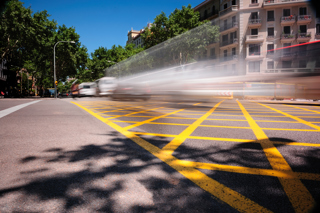The number of people killed in collisions in Great Britain where at least one driver was over the drink-drive limit is at its highest level for 13 years, according to new figures from the Department for Transport (DfT).
The DfT estimates that up to 320 people lost their lives, with a central estimate of 300, which represents about 18% of all deaths in reported road collisions in the year and a 16% year-on-year increase.
Overall, the data for reported road casualties involving illegal alcohol levels in 2022, shows that some 6,800 people were killed or injured when at least one driver was over the drink-drive limit.
This, however, represents an increase of 1% from 6,740 in 2021 and is the third lowest figure recorded since 1979.
| Drink-drive fatalities | Drink-drive KSIs | Drink-drive casualties | |
|---|---|---|---|
| Number in 2022 | 300 | 1,920 | 6,800 |
| Change since 2021 | 16% | 3% | 1% |
| Change since 2012 | 32% | 1% | -32% |
| As a proportion of all fatalities or casualties | 18% | 6% | 5% |
While there are different patterns in the numbers of drink-drive fatalities and total casualties in recent years, the percentage of road casualties, whether fatalities, serious or slight injuries, that were drink-drive related has increased over the past 10 years.
However, it is worth noting that in 1979, more than one-in-four road deaths (26%) occurred in collisions where at least one driver or rider was over the drink-drive limit. This had fallen to 15% by 1989.
Since then, the percentage of road deaths that are drink-drive related has varied between 12% and 18%.
IAM RoadSmart policy and public affairs manager, William Porter, said: “It is deeply concerning that drink-drive related fatalities are at their highest level since 2009 and worryingly shows a dangerous upward trend for the second year running.
“IAM RoadSmart research shows motorists consider drink-driving to be the highest enforcement priority for traffic police with 45% of motorists considering it to be the top issue in our 2023 safety culture report.
“We strongly support the increase in frequency of random roadside breathalyser testing, and additional resources for police forces to enable them to carry this out.
“Alongside this, more drink-drive rehabilitation courses will be a key part to tackling this issue given the evidence that shows that those undertaking such courses are two-and-a-half times less likely to re-offend.”
Fatalities in reported drink-drive collisions in Great Britain, as a percentage of all fatalities
Source:DfT
Porter also believes that the UK Government should give serious consideration to reviewing and reducing the drink-drive limit in England and Wales.
Hunter Abbott, MD of personal breathalyser firm AlcoSense, says that some studies show that people who drink above Government guidelines have been drinking more heavily since the pandemic, which may explain the increase in collisions where alcohol is a factor.
The DfT, in publishing this latest data set, also suggests it could have had an impact on the numbers.
Abbott added: “These figures only record accidents where a driver was actually over the legal limit, which in England and Wales is the highest in Europe
“What they don’t tell you is how many more casualties were caused by ‘lethal but legal’ drivers – those who were under the official limit but still impaired.”
Analysis by AlcoSense of the new data shows that London and the South East accounted for 30% of all drink drive casualties in Great Britain, with the North-East recording the fewest (3%).
June and July were the worst months for drink-related injuries on the roads, with 630 casualties in each month.
Just 37% of motorists involved in a collision were breathalysed, compared with 53% ten years previously.
Abbott, who is also a member of the Parliamentary Advisory Council for Transport Safety (PACTS), said: “More drivers need to be tested by police after an accident. Every year 17% of motorists fail the test or refuse to provide a sample.”
Range of zero alcohol drinks makes drink-driving ‘inexcusable’
According to a new poll from the AA, eight out of 10 drivers (83%) say that, with the wide range of zero alcohol drinks now available, drink-driving is ‘inexcusable’.
The survey of more than 13,800 drivers also discovered that more than two fifths (46%) of drivers have tried a zero alcoholic drink, with around one in seven willing to try the numerous low alcohol options available to them including; gin, lager, stout, rum and wine.
Such is the rising popularity of zero and low alcoholic beverages available to drivers that more than a third (35%) of young drivers aged 18-44 will take such drinks with them when they are the designated driver visiting family and friends.
Similarly, 35% of drivers have zero alcohol drinks at home, where a quarter say their visitors are now choosing them over other options.
Edmund King, AA president, said: “Our mantra has always been ‘if you’re going to drink, don’t drive and if you’re going to drive, don’t drink’.
“Those getting behind the wheel can now feel closer to an event with the wide range of non-alcoholic drinks but are safe in the knowledge that they can safely drive home.”


























Login to comment
Comments
No comments have been made yet.